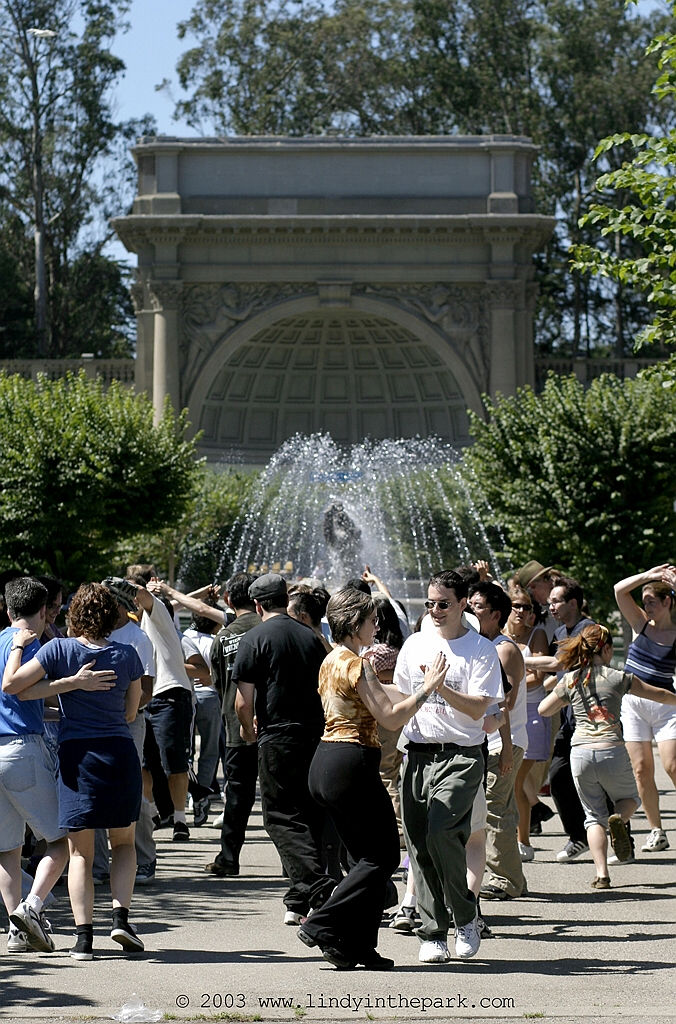the Lindy Time Machine
- Chad Kubo
- Nov 21, 2020
- 4 min read
Past vs Present
Stone Age of Technology
In 1994 we did not have the advantage of technology to see, enjoy and learn Lindy Hop like the present. There was no online videos or pictures taking with smartphones, no YouTube, Facebook, Twitter, Instagram, TicTok, Amazon, Uber etc., they did not exist at the time. If you wanted a picture, you brought a camera–with film which you had to have developed in order to see the photographs (Many shots were blurry, the exposure bad and the framing was off). If you wanted video you brought a huge video camera and bright lights that sat on your shoulder. To watch videos, you got together to watch it on a VHS or Beta Player hooked up to a old cathode ray tube TV (No flat screens) and at low resolution. There were no iPads or laptops.
Communication and coordination between dancers was difficult without cell phones. In the early days the internet was rudimentary. We had analog land lines, answering machines, pagers, fax machines, phone pyramids lists, We learned Lindy Hop through VHS tapes bought at thru the workshops at $20 apiece and bought music CD's. Only the DJ's really knew and collected the music, many of them spent a lot of money buying hundreds of dollars of CD's just to get a few danceable tempo songs. DJ's also needed access to analog DJ equipment like mixers, speakers and CD decks to play the music. Many DJ's carried several heavy albums of CD's and at least two CD players to hook up to the mixers.
We later moved up with technology to Sony mini disk players, music from Nabster, converted CD music to MP3 format then downloaded to iPods or other MP3 players. Eventually Apple came up with iTunes which made it easier except for the digital rights problems and limited hard disk space on iPods. We could now DJ with computers but we had to buy external sound cards or devices to preview the music on headphones.
Cell phones were available but the screens were mono LED screens and not so smart. We could take low rez pictures at low megapixels and later 3 minute low rez videos but not in the low light of the dances. It was better because now we could contact each other, instead of showing up in different places and dances with no way to communicate. We did whatever we needed to do to dance despite any obstacles.
What was it like to Learn Lindy Hop?
We had to travel farther and seek out workshops outside the S.F. Bay Area in the beginning. Most advanced teachers were not local. We danced 4-5hrs a night 7 days a week triple on Sunday for years. We shared bands with non-swing dancers, Street Swingers, Rockabilly dancers, and novices. There was no Lindy scene yet we danced mostly East Coast Swing. There was a Street Swing scene years before there was a Lindy Hop scene and we were treated as outsiders of their scene for a time.
I traveled to Seattle, Portland, Austin, Texas, Baltimore. Mayland, Sweden, Chicago, NY, Mexico to learn Lindy Hop. Lindy Exchanges did not exist until SF accidentally helped create them with Chicago Lindy Hoppers.
The Lindy Vibe?
Dancers were more interested in social dancing in the SF Bay Area, not competition not like today. We felt competing would hurt the social scene as it did in the West Coast Swing and Salsa scene, we did perform however.
As the SF Bay Area scene grew, we were obsessed with learning Lindy Hop and sharing it throughout the Bay Area. We danced with everybody.
We traveled anywhere there was swing music throughout the Bay Area discovering new places and bands, local, new and old classic. Mostly from our search through radio, newspapers, flyers, word of mouth or regular established venues. That was until the internet evolved and we used it to post where all the dances and instructors were in the Bay Area. Our motto was, Anywhere, Anytime!
.
From Nothing to Community
Our commitment to Lindy Hop created Lindy in the Park, Golden Gate park San Francisco. We wanted an outdoor event just to have other people to dance with, little did we know it would continue for 26+ years. Beginning roots of Lindy Exchange, Birthday/ Newcomer jams, Switching, Stealing, Frankie Manning, Norma Miller, Dawn Hampton, Rhythm Hot Shots, Scores of teachers from all over the world and musicians came to San Francisco. By the year 1998 we were the “Mecca of Lindy Hop in the World” and attracted dancers from all over the nation and the globe. We were known as the most friendly scene and considered the best social dancers because of our connection and musicality. There was little to no conflict or rivalry between teachers; we all helped and cross promoted each other, even helping other teachers to teach by participating in their class rotations as students.
I created the Doghouse Saturday night dance venue in response to not having a committed place for Lindy Hoppers to dance run by Lindy Hoppers.
We were hungry and committed about learning the history, music, music structure and how to be more musical in our dance. Connection with each other and on the dance floor was everything to us.
Dancers shared their knowledge freely and had a committed interest, dedication to learning and getting better.
One year dancing in SF was like dancing 5-7 years anywhere else because we danced every night.
As Lindy Hopper's we all agreed our goal was to share the joy of dance and grow our community.





Comments